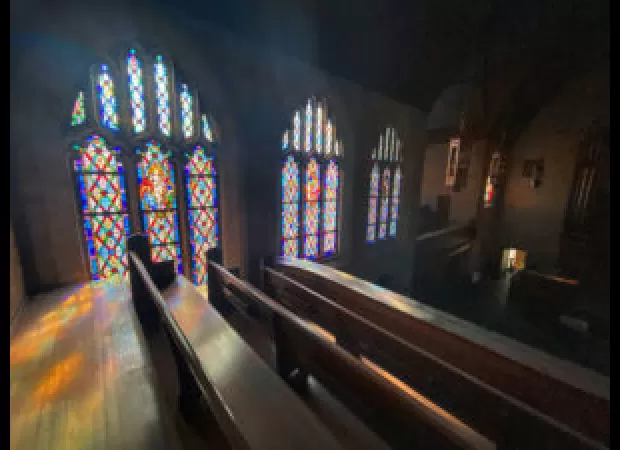Churches in Washington State can get special credits to help retain employees.
Churches, mosques, synagogues & temples in Washington State may qualify for employee retention credits if they paid W-2 wages subject to Social Security & Medicare taxes. This is good news for faith communities affected by Gov. Inslee's "Stay Home Stay Healthy" proclamation.

Did your faith community have to suspend services due to Governor Inslee's "Stay Home Stay Healthy" proclamation? If so, we have some good news for you - your faith community almost surely qualifies for employee retention credits if it paid W-2 wages subject to Social Security and Medicare taxes.
The March 23, 2020 proclamation from the Washington State Governor, which prohibited faith communities from gathering, counts as a full suspension from March 23, 2020 through January 11, 2021. And then the January 11, 2021 proclamation, which amended the original closure order with those three “phases” based on infections, counts as a partial suspension from January 11, 2021 through June 30, 2021. So, nearly every Washington state house of worship qualifies, especially those located in King, Snohomish, and Pierce counties.
The one exception to the “everybody qualifies” rule is faith communities with more than 100 employees in 2020 and more than 500 employees in 2021, including those where the employer is not a single house of worship but a larger ecclesiastical entity.
The employee retention credit formula calculates surprising large refunds based on W-2 wages subject to Social Security and Medicare taxes. Most employers get up to 50 percent of the first $10,000 paid to an employee in 2020 while fully or partially suspended, usually that means $5,000 for each employee in 2020. Most employers also get up to 70 percent of the first $10,000 paid to an employee in a quarter of 2021 while fully or partially suspended. Usually that means $14,000 for each full-time employee paid in 2021, and then 70 percent of the wages paid to part-time employees during the first half of 2021. These amounts add up quickly and we often see $50,000, $100,000 or even $200,000 in total employee retention credit refunds.
It's important to note that salaries paid to ministers may not be subject to Social Security and Medicare taxes. Also, it's important to note that the employee retention credit applies to W-2 wages, not other forms of income such as self-employment earnings or a housing allowance.
If you haven't claimed employee retention credits you're entitled to, don't worry - you need to amend the quarterly 941 payroll tax returns you file with the Internal Revenue Service. You simply add the employee retention credits you're entitled to to the return. That creates a refund. You then file the return. And a few weeks or months later, the IRS will send you the check. The one thing you do need to do is explain why you're entitled to the refund. You're getting a lot of money back, so you need a detailed statement.
Are you a member of a Washington State church, mosque, synagogue or temple that had to suspend its services due to Governor Inslee's "Stay Home Stay Healthy" proclamation? If so, you have some good news!
Your faith community may qualify for some significant employee retention credits if it paid W-2 wages subject to Social Security and Medicare taxes, even if you are a small group. Employers qualify for employee retention credits under a variety of conditions, one of them being when a government order either fully or partially suspends operation. Since the March 23, 2020 proclamation from the Washington State Governor, which prohibited faith communities from gathering, counts as a full suspension from March 23, 2020 through January 11, 2021, and the January 11, 2021 proclamation, which amended the original closure order with those three “phases” based on infections, counts as a partial suspension from January 11, 2021 through June 30, 2021, nearly every Washington state house of worship qualifies, especially those located in King, Snohomish, and Pierce counties.
The only exception to this rule is for faith communities with more than 100 employees in 2020 and more than 500 employees in 2021, including those where the employer is not a single house of worship but a larger ecclesiastical entity, such as the Roman Catholic Archdiocese of Seattle.
The employee retention credit formula calculates surprisingly large refunds based on W-2 wages subject to Social Security and Medicare wages. Most employers get up to 50 percent of the first $10,000 paid to an employee in 2020 while fully or partially suspended, usually meaning $5,000 for each employee in 2020, and up to 70 percent of the first $10,000 paid to an employee in a quarter of 2021 while fully or partially suspended, usually meaning $14,000 for each full-time employee paid in 2021, and 70 percent of the wages paid to part-time employees during the first half of 2021, leading to refunds commonly of $50,000, $100,000, or even $200,000. Note that salaries paid to ministers may not be subject to Social Security and Medicare taxes.
It is important to note that claiming the employee retention credit does not depend on whether or not your faith community received a paycheck protection program loan. The "you can't double-dip" rule used to apply, but Congress later changed the law.
If you haven't claimed the employee retention credits you're entitled to, you need to amend the quarterly 941 payroll tax returns you file with the Internal Revenue Service. You simply add the employee retention credits you're entitled to to the return, creating a refund, which you then file. A few weeks or months later, the IRS will send you the check. However, you need to explain why you're entitled to the refund in a detailed statement.


